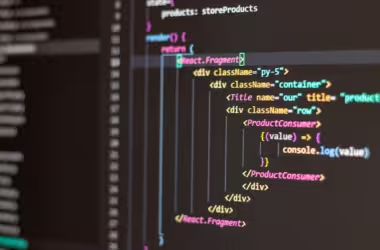Ever envisioned a software project launching on time, within budget, and exceeding expectations? Unfortunately, the reality of software development timelines can often be a frustrating dance with missed deadlines and unexpected delays. But fear not!
This comprehensive guide empowers businesses and developers to create realistic and achievable timelines, setting the stage for project success.
Demystifying the Timeline: Key Factors Influencing Project Duration
Imagine a software development timeline as a carefully constructed road map. The final destination – your completed software – is clear, but the path to get there is shaped by several crucial factors:
- Project Scope: Think of the project scope as the size and complexity of your software. A simple mobile app with basic functionalities will naturally have a shorter development timeline compared to a feature-rich enterprise application. Breaking down the scope into smaller, manageable phases allows for more accurate time estimates and avoids scope creep – the dreaded phenomenon where new features are added mid-development, derailing the timeline.
- Team Expertise and Resources: Just like a skilled driver navigates a road trip more efficiently, an experienced development team can work faster and overcome challenges more effectively. However, limited resources, like having junior developers or a lack of designers, can extend the timeline. Identify potential resource bottlenecks early on and consider bringing in additional team members if necessary.
- Development Methodology: The chosen development methodology acts as the guiding principle for your project journey. Agile methodologies, like Scrum, break down development into iterative cycles, allowing for continuous feedback and adaptation. Waterfall methodologies, on the other hand, follow a more linear approach, potentially impacting flexibility and timeline adjustments. Understanding the strengths and weaknesses of different methodologies (e.g., Agile’s adaptability versus Waterfall’s upfront planning) is crucial for choosing the one that best suits your project and timeline constraints.
- Technology Stack: The specific programming languages, frameworks, and tools used are like the vehicle you choose for your road trip. Complex technologies like blockchain might require additional learning time for the team, impacting the timeline. Conversely, using well-established frameworks can streamline development and shorten the journey.
Beyond the Basics: Additional Considerations for Accurate Estimation
A realistic software development timeline goes beyond just the core development phases. Here are some additional factors to consider for a more holistic approach:
- Integration Needs: Does your software need to integrate with existing systems or third-party APIs? Factor in the time required for this integration process, accounting for potential delays due to compatibility issues or unforeseen challenges.
- Testing and Quality Assurance: Imagine a road trip with a car riddled with problems. Thorough testing throughout the development lifecycle is paramount. Allocate sufficient time for robust testing to ensure a bug-free and high-quality final product. Remember, it’s always better to find and fix issues early on than encounter them after launch.
- Deployment Strategy: Whether you’re deploying your software on the cloud, on-premise, or using a hybrid approach, have a clear deployment strategy in place. Understand any dependencies or potential delays associated with the chosen deployment method.
- Buffer and Flexibility: Life (and software development) rarely goes exactly according to plan. Allocate a buffer of time in your timeline to account for unexpected issues, bug fixes, or change requests. Building in flexibility allows for adaptation and prevents the frustration of unrealistic deadlines.
Tools and Techniques for Effective Timeline Management
Now that you understand the key factors influencing your software development timeline, here are some practical tools and techniques to manage it effectively:
- Work Breakdown Structure (WBS): Think of a WBS as a detailed roadmap that breaks down the project scope into smaller, more manageable tasks. Each task has an estimated time required for completion, facilitating more accurate overall timeline estimation.
- Time Estimation Techniques: There’s no magic formula for predicting development time. However, various time estimation techniques like expert judgment (based on the team’s experience), analogy estimating (comparing your project to similar projects), and parametric estimating (using historical data and industry averages) can guide you. Understanding the strengths and limitations of each technique empowers the development team to choose the most appropriate method for your project.
- Communication and Collaboration: Clear communication and collaboration between stakeholders, developers, and project managers are essential for staying on track. Regular meetings, progress reports, and open communication channels help identify potential roadblocks early on, allowing for proactive adjustments to the timeline.
- Project Management Software: Leverage the power of project management software tools like Gantt charts or Kanban boards. These tools visualize your timeline, track progress, identify potential delays, and ensure everyone is on the same page.
Sample Timelines: Understanding Development Phases (Realistic Expectations)
While every software development project is unique, having a general understanding of development phase timelines can be helpful. Here are some sample timelines for different project types, keeping in
Sample timelines are estimates and may vary depending on project complexity.
- Simple Mobile App (3-6 months):
- Concept & Design (1-2 weeks)
- Development (2-4 months)
- Testing & QA (2-4 weeks)
- Deployment (1-2 weeks)
- E-commerce Platform (6-12 months):
- Concept & Design (2-4 weeks)
- Development (4-8 months) – Complexity increases due to features like product listings, shopping cart, and payment integration.
- Testing & QA (4-6 weeks) – More thorough testing required for security and functionality.
- Deployment (2-4 weeks)
- Enterprise Application (12+ months):
- Concept & Design (4-8 weeks) – Extensive planning and user research involved.
- Development (8+ months) – Highly complex functionalities and integrations require significant development effort.
- Testing & QA (6+ months) – Rigorous testing to ensure scalability and reliability.
- Deployment (4-8 weeks) – Complex deployment process involving multiple environments and stakeholders.
Remember, these are just samples. The actual timeline for your project will depend on the specific factors discussed previously.
Conclusion: Building Success Through Realistic Timelines
By investing time and effort into thorough planning and timeline estimation, you set your software development project on the path to success. A realistic timeline fosters clear communication, avoids last-minute surprises, and ensures a smooth journey from concept to launch. Remember, software development is not a race to the finish line; it’s a strategic voyage where a well-defined roadmap is your key to a successful destination.
As the software development landscape continues to evolve, new tools and methodologies emerge to further enhance timeline accuracy. Keep an eye on emerging trends, like low-code/no-code platforms or the wider adoption of Agile methodologies, to potentially streamline development and refine your timeline estimation process for future projects.
Now, go forth and chart your course! With a well-defined software development timeline as your guide, you’re well on your way to building a successful and impactful software solution.






